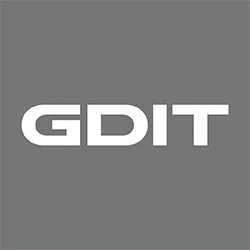Systems Modeling Language (SysML), is an international standard used to model physical systems and to represent their structure, behavior, and requirements. It has been a backbone of global engineering efforts and is one of the most successful modeling languages produced. When it was introduced in 2006, it represented a huge leap forward in the way systems engineers could model, analyze, and communicate about complex systems in a broad spectrum of industries such as automotive, aerospace, or defense. For all of that, it has simply not kept pace with a technological landscape that moves faster and requires more agile solutions.
Say hello to SysML 2.0.
This year, the Object Management Group – the Standards Development Organization behind SysML and over 200 other modeling standards – is publishing SysML 2.0 which builds on its predecessor in ways that are excitingly disruptive yet carefully incremental. SysML 2.0 enables digital engineering use cases that were previously difficult or not previously possible (e.g. deep formal analysis, ‘models as code’, even ML and AI applications). These are the types of use cases that many in the Federal government, particularly in the Department of War community, are pursuing right now.
With that in mind, here are five points to whet your appetite on how SysML 2.0 will provide a new launchpad for systems engineering:
Precision nets flexibility.
It sounds counterintuitive, but SysML 2.0’s precision creates program flexibility. SysMLv1 lacked the specificity that could take it from a descriptive language to a true engineering language. In comparison, SysML 2.0 is rethought from the ground up as an extremely precise language. True automation requires this level of precision, and with it, teams can build to scale with confidence. SysML 2.0 expands the art of the possible while simultaneously enabling agile, urgent, purpose-built installations.
There are real cost-savings to be had.
In addition to more precise analysis, SysML 2.0 provides more tooling options, faster project iteration, improved graphics, and a new textual notation. SysML 2.0’s tools accurately export and import this text, leading to better interoperability, better fidelity, and better tooling - all of which save project time. The improved interoperability further means that projects can start small with inexpensive or free tools, and confidently scale their tools and cost as their needs grow. Organizations can better fit tools to needs and reevaluate their relationships with vendors as requirements shift.
SysML 2.0 can help build a culture of model quality.
Because SysML 2.0 provides a higher level of rigor and analysis, it can help build a culture that prioritizes quality and precision engineering. It facilitates the management of the details without losing them under the pressure of deadlines or other constraints. Details are the make or break of engineering, but too many details at once overwhelm human sensibilities and lead to a drop in communication and comprehension. SysML 2.0 gives engineers the tools to create abstractions that are easily understood components, without ever losing the details that make them achievable.
The transition is worth it.
This sounds like a massive shift, but SysML 2.0 was designed from the beginning to build a smooth transition from SysMLv1 practices. The core of SysMLv1 maps cleanly to SysML 2.0 features, and many of the new features in SysML 2.0 are manifestations of best practices in SysMLv1. In short, at a conceptual level this is an incremental migration, not an upheaval.
Partners exist to help.
At GDIT we are engaged in our own transition projects and are continually finding new integration and cost-saving opportunities that better inform us on how to assist our customers in their transition to SysML 2.0. Having broad experience with industry tools, a deep understanding of modeling, and an established trust with our clients, means that GDIT is well situated to connect requirements with solutions for all of our partners.
As systems engineers, we’ve never had more data, capabilities, tools or demand for what we do, and it can be daunting to find a guide through the deluge. SysML 2.0 is the threshold to a new horizon of possibilities for us all, we need only step onto the path.






